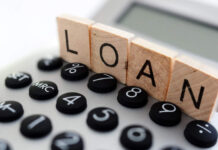Green loans are a type of loan that is environmentally friendly. It helps people who would otherwise be unable to afford the cost of green upgrades.
The loans are designed for homeowners who want to invest in energy efficiency products like solar panels or a new furnace.
This article will go over what green loans are and how they work. But also why you should consider them if you’re looking for ways to improve your home’s sustainability.
Whenever you’re ready to dive deep into going green, keep reading.
What Are Green Loans?
A green loan is a type of loan that is environmentally friendly. They are designed for homeowners who want to invest in energy efficiency products like solar panels or a new furnace.
Green loans can be offered through banks, the federal government, state and local governments, companies specializing in green home improvements, and other places. These types of loans are usually not available from traditional lenders such as mortgage providers because they don’t offer them yet.
A green loan works just like any other kind of loan – you borrow money now with an agreement to repay it later (except your payments will go towards paying off the cost of installing eco-friendly things).
These “green” upgrades would include items such as water heaters; insulation material; air conditioners; windows; water filtration systems; and solar panels.
Green loans are a great way to invest in your home, make it more efficient, save on energy costs and help the environment all at the same time.
The one drawback: these green loans can be expensive because they require an up-front investment before you start saving money by using less natural resources than ever before!
But if you’re willing to pay that little extra each month, this is certainly worth considering as a real solution for our planet’s future.
Who Can Take Out A Green Loan?
Green loans are available to anyone who meets the following qualifications:
- You have a qualifying home
- Your credit score is above 640 and you can provide proof of income such as pay stubs or tax returns from two years ago
Green loans are also available for those who would like to become homeowners but don’t want to put down 20% on their home, which means that they’ll need an FHA loan instead.
These green loans will be in conjunction with the regular type of mortgage so it’s important to talk about this ahead of time with your lender because there may be additional costs associated – including possibly paying more each month than someone without a green upgrade might!
Some lenders out there require you to take out all sorts of add-ons (such as life insurance) to get the green loan, which is something you want to be aware of before signing on.
You’ll have an energy audit performed by a certified professional who will determine if certain upgrades would qualify your home for a green loan. These loans are just like any other and come with all sorts of rates that can vary depending on what kind of mortgage you’ve already got!
Some banks offer these types of loans at preferential interest rates so talk about this as well when meeting with your lender – it might make sense in some cases to take out both types of mortgages since they’ll stack up and end up saving you money over time!
Secured & Unsecured Green Loans
Like with most other types of loans, green loans can either be secured or unsecured. An unsecured green loan is typically secured against your credit score and income, which is a much more appealing option for many people.
But if you’re looking to use the financing for a significant purchase like real estate or need some collateral then you might want to go with an unsecured green loan that doesn’t rely on these factors to be approved.
Secured loans are also popular because they come with lower rates of interest since there’s no risk of defaulting on payments due to bankruptcy – it gets paid off before any other debtors!
Green loans can either be secured or unsecured depending on what sort of mortgage you’re seeking out; talk about this when meeting with your lender so as not to miss out on important information and possible benefits!
The benefits of a secured loan are:
- Lower rates of interest
- Collateral can be used as equity for the loan
- Potential for borrowing increased
The benefits of an unsecured loan are:
- No collateral requirements or bankruptcy risk to worry about!
- Quick applications
- Early repayment flexibility
When meeting with a lender, be sure to discuss which type is best for you.
Ask questions and don’t hesitate to ask them if anything’s unclear; they’re well informed on the entire process and can give some sound advice that might be useful for your situation.
Don’t forget to mention how much you want the loan amount to be, when you’ll need it by (and if a repayment period is set), as well as any other pertinent information!
Variable vs Fixed Rate Interest
When it comes to selecting your interest structure for a green loan, you have two options. First, a fixed-rate interest. Second, a variable rate interest.
Fixed-rate interest is great for those who want to know the interest rate they’ll be paying and not have it increase over time. Variable rates are great for those who may need a little more flexibility in their budgeting or would like to take advantage of possible decreases in interest rates if we see an economic downturn (though this is unlikely).
Furthermore, you may want to consider choosing a fixed rate interest if your credit is not so great and you could benefit from the more secured repayment terms. Whereas, a variable rate would be better for people with better credit.
In any case, with the right attitude, funds, and credit, there isn’t a better interest rate. It’s simply a matter of how you manage it over the long term, allowing you a greater deal of freedom in your loaning experience.
Other Loans Are Available
Another thing to consider is that a green loan is not your only option. When it comes to making environmentally friendly changes to your household, you can also take out a home equity line of credit.
In the end, the things that matter in the loan are not the titles. The best loan for your needs will have an acceptable interest rate, loan term length, and repayment flexibility. Not to mention, the charges should not be drastically against you.
Hence, any loan that suits your needs will work for you. Don’t get limited by buzzwords, and get the money you deserve for the changes you require. Learn more about potential loans from Plenti.
The Cost of A Green Loan
To determine the total cost of your green loan, you will have to consider some aspects of the loan.
First, variable rate loans might seem like they make more sense than fixed-rate loans. This is because their rates change along with market conditions. Hence, it could offer some protection against an increase in interest rates.
BUT if variable-rate plans go up dramatically as well then your loan becomes much harder on your budget. Hence, it’s best to take precautions by getting either of these types of personal loans.
Second, some people would say that the upfront fee is a small price to pay to reap the benefits of paying off your balance sooner. Like banks or credit card companies, numerous organizations charge these up-front fees for an application and are usually non-refundable even if you don’t end up using their service.
It’s important however that this isn’t just seen as another means for institutions to make money from customers because it can also be looked at as saving time by avoiding interest rates over time – getting rid of pesky monthly payments!
Third, there will be ongoing fees that occur throughout the loan. After you’ve taken out your loan, there will be monthly or annual account keeping and default fees. There are also several hidden charges in terms’ and conditions’.
Thus, all of these costs combined will let you come to a comparison rate. If you continue to compare the same green loan amount and terms, a comparison rate will better let you see the cost of these loans.
There might also be fees for repaying your loan early. You should balance these against the reduction benefit of interest amounts that you pay on your loan by making extra repayments that reduce the amount you owe. Always use comparison tables, a comparison calculator can help as well.
Financial Education for Free
Now that you understand the gist of green loans, you are well on your way to deciding if they are right for you. In any case, there’s no rush with decision-making when it comes to finance, so take your time.
If you’re interested in a variety of other finance-related articles, check out some of our content on the sidebar or down below.



































































